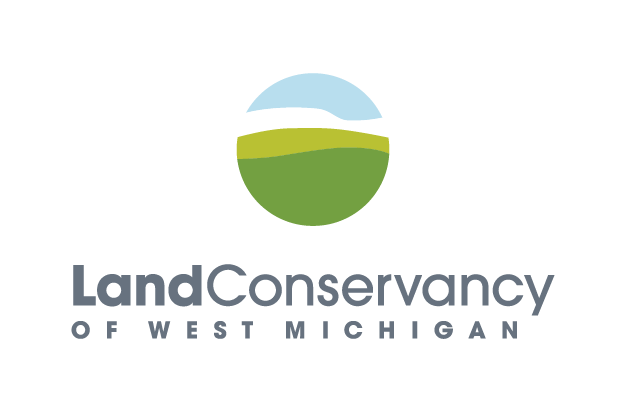
Creating a Forest for Birds: More than Just a Walk in the Woods
By Stephanie Gerling, LCWM Volunteer
A buzzing bee. Spring is here! Cheeseburger! A mimic. An occasional meow. A loose trill. A sharp trill. Here I am, where are you? Like a robin with opera lessons. Sweet, sweet I’m so sweet. Conkeree. Like when you dip your toe in cold water.
These were just some of the bird songs heard at the “Creating a Forest for Birds” program held in May at Wege Foundation Natural Area in Lowell. Nearly 40 people attended this event, co-hosted by the Land Conservancy of West Michigan and the American Bird Conservancy.
Some people came for the birds, outfitted with binoculars and personal ledgers to keep track of the indigo buntings and blue winged warblers they spotted during the hike. Some people, like me, just wanted to learn more about this increasingly popular hobby that 3 out of 10 Americans participate in* and downloaded the Merlin Bird ID app on the drive to Lowell. (Really though, you should download the app, too! It helps identify the birds singing nearby. Kind of like Shazam for nature.)
Others came to learn more about transforming their yards into a supportive habitat. “We have about 4-acres on our property that we’re slowly bringing back to a more natural state,” said one attendee. “We’re removing invasive species, planting native flowers, figuring out what to do with the older trees that have fallen down during storms.”
(Leave them, said the professionals, let nature take them over.)
Led on a gentle hike by Austin Heslinga and Linnea Rowse of the American Bird Conservancy, we learned about the different ways to create a supportive and healthy habitat for birds in our own yards, using the 62 acres of Wege Foundation Natural Area as our backdrop.
As we made our way through the preserve, Austin and Linnea highlighted the ongoing restoration efforts at Wege Foundation Natural Area, where LCWM has been removing invasive species like autumn olive to restore oak savanna ecosystems with rich biodiversity. This carefully planned restoration includes the removal of fast-growing maples that block light and crowd out native species, while preserving the native oaks that define this landscape and provide safe haven to countless nesting birds.
“You can hear the plants racing to get up to the sun, competing for the sunlight,” said Austin as we paused along the trail. He was right. With more light reaching the forest floor, the native grasses and wildflowers now have a chance to flourish and you could practically hear them growing. Signs of a recent prescribed burn—charred spots along the path with new green growth already popping through—were seen at multiple points throughout our hike.
The sounds of nesting season surrounded us, too, and Linnea directed us to movement in the canopies to spot warblers, sparrows, and chickadees. The group heard the distinctive “bee-buzz” song of the blue-winged warbler, a species in decline but showing signs of recovery thanks to habitat restoration. We also spotted indigo buntings flitting among the leaves and heard the trilling song of pine warblers in the conifers. The sounds of black-capped chickadees and red-eyed vireos signaled the arrival of spring. An oven bird called out—inspiring Linnea to tell us about their nests (like a small dutch oven on the ground) and let us know that “if you find an oven bird nest, consider yourself lucky and a good observer.” A sandhill crane—one of the oldest species still living today (a modern day dinosaur, said Linnea) let out its prehistoric, echoing voice at the end of the hike.
Austin and Linnea also walked us through the Forestry for Michigan Birds initiative, designed to help landowners make informed decisions about healthy and sustainable forest management. Austin noted that the diverse forest structure of various ages, densities, and openings creates a healthy ecosystem that supports a wider range of bird species. Habitat loss and degradation are the biggest threats to forest bird populations, but selectively removing invasive species and increasing native ones calls those birds back home, so to speak.
For private landowners interested in transforming their properties into a bird habitat, the event introduced resources like the Conservation Stewardship Program (CSP), which financially supports conservation practices and the National Sustainable Agriculture Coalition (NSAC) that offers guidance for landowners looking to integrate bird-friendly practices into their land management.
There was no shortage of opportunities to learn how to adopt better environmental practices and adapt our own gardens, lawns, and acreage into a healthy habitat for birds during our guided hike. For those who weren’t able to attend, you can check out the Forest Owner’s Guide to Forestry for Michigan Birds here and keep an eye out for future birding events at our website.
*according to the National Survey of Fishing, Hunting, and Wildlife-Associated Recreation.









Karen Olson
I really enjoyed this blog post, Stephanie. Well done.
I felt I went right back to the day we were there.